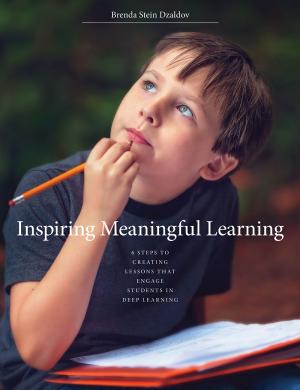
Inspiring Meaningful Learning: 6 Steps to Creating Lessons That Engage Students in Deep Learning
Starting with key elements needed to design effective learning experiences, “[t]his practical resource shows you how content, pedagogy and rapport work together to get students involved in their learning.” Ontario teacher and teacher-educator Brenda Stein Dzaldov skillfully guides teachers through the steps to: write and share learning goals in language accessible to students; model for learning – teach by showing and doing; engage students in guided practice that encourages independence; use assessment strategies with students to deepen learning; and close lessons by bringing reflection and context to learning.
In the first chapter, Stein Dzaldov focuses on rapport as fundamental for meaningful learning; where rapport exists, students report they feel noticed, valued and supported by a teacher who welcomes questions, communicates clearly, is respectful and checks in with them. Key to this process is sharing how students will use their knowledge, involving students in choosing texts, and ensuring they have opportunities to ask and answer questions, participate in discussions with peers and educators and make connections to their lives and to the world.
Throughout the book, the author challenges readers to examine their practice with a critical eye, reframing teacher activities to keep the focus on meaningful learning. For example, from Chapter 2: “instead of thinking of classroom set-up as organizing or decorating, think about it as designing the learning environment.” The reader is encouraged to think about learning activities and how the environment will contribute to them. How can I [the teacher] design the environment to facilitate conversations e.g. teacher/student, whole class, small groups? How can I use vertical surfaces (bulletin boards, whiteboards, etc.) to support learning with anchor charts, learning goals, etc.? How will I display student work to celebrate their learning? Does the design encourage students to take ownership of the space, accessing what is needed for their learning?
The remaining chapters address sharing learning goals and success criteria (Chapter 3), designing input and modelling (Chapter 4), ensuring guided and independent practice (Chapter 5), using assessment as a tool for learning (Chapter 6) and closing the lesson effectively (Chapter 7). This book is a must-have resource for a teacher candidate or early-career teacher.
JoAnne Formanek Gustafson is a member of the Rainy River Occasional Teacher Local.